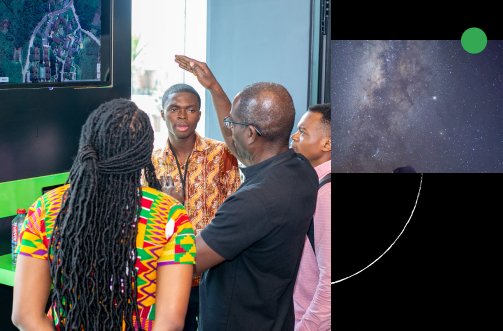
Edith Cohen
I am a Research Scientist at Google (Mountain View, CA) since 2015. I am also a (visiting) full professor at the School of Computer Science at Tel Aviv University in Israel. I attended
Tel Aviv University
(Israel)
for my undergraduate studies in math, physics, and
computer science, graduating in 1985, and continued to obtain an M.Sc.
in computer science in 1986, supervised by Michael Tarsi. I then headed to
Stanford, CA, where I
worked on a Ph.D. in Computer
Science,
with
Andrew Goldberg and Nimrod Megiddo, graduating in 1991.
From 1991 to 2012, I was a member of the research staff, first at the
legendary AT&T Bell Laboratories , and after a 1997 split, at AT&T Labs Research. In 1997 I also visited the Computer Science Division at UC Berkeley. From 2012 to 2014 I was a principal researcher at Microsoft Research (Silicon Valley).
My research interests include Algorithms design, Data Mining, Machine Learning, Optimization, Networks, and more. I prefer a principled approach to modeling and design and I am always looking to learn and expand my horizons. In the span of my research career, I developed models and scalable algorithms in a wide range of areas including query processing and optimization, data summarization, content search and delivery, caching, prefetching, routing, streaming and distributed computation, fundamental graph algorithms and scalable mining of massive graphs. My work enables the leveraging of much larger data sets than previously possible. More details on my work can be found on my personal web page.
Research Areas
Authored Publications
Sort By
Differentially Private Insights into AI Use
Daogao Liu
Pritish Kamath
Alexander Knop
Adam Sealfon
Da Yu
Chiyuan Zhang
Conference on Language Modeling (COLM) 2025 (2025)
Preview abstract
We introduce Urania, a novel framework for generating insights about LLM chatbot interactions with rigorous differential privacy (DP) guarantees. The framework employs a private clustering mechanism and innovative keyword extraction methods, including frequency-based, TF-IDF-based, and LLM-guided approaches. By leveraging DP tools such as clustering, partition selection, and histogram-based summarization, Urania provides end-to-end privacy protection. Our evaluation assesses lexical and semantic content preservation, pair similarity, and LLM-based metrics, benchmarking against a non-private method inspired by CLIO (Tamkin et al., 2024). Moreover, we develop a simple empirical privacy evaluation that demonstrates the enhanced robustness of our DP pipeline. The results show the framework’s ability to extract meaningful conversational insights while maintaining stringent user privacy, effectively balancing data utility with privacy preservation.
View details
Preview abstract
Cardinality sketches are compact data structures that efficiently estimate the number of distinct elements across multiple queries while minimizing storage, communication, and computational costs. However, recent research has shown that these sketches can fail under adaptively chosen queries, breaking down after approximately $\tilde{O}(k^2)$ queries, where $k$ is the sketch size. In this work, we overcome this quadratic barrier by designing robust estimators with fine-grained guarantees. Specifically, our constructions can handle an exponential number of adaptive queries, provided that each element participates in at most $\tilde{O}(k^2)$ queries. This effectively shifts the quadratic barrier from the total number of queries to the number of queries sharing the same element, which can be significantly smaller. Beyond cardinality sketches, our approach expands the toolkit for robust algorithm design.
View details
Scaling Embedding Layers in Language Models
Preview
Da Yu
Yangsibo Huang
Pritish Kamath
Daogao Liu
Chiyuan Zhang
2025
Preview abstract
We revisit the fundamental question of formally defining what constitutes a reconstruction attack. While often clear from the context, our exploration reveals that a precise definition is much more nuanced than it appears, to the extent that a single all-encompassing definition may not exist. Thus, we employ a different strategy and aim to "sandwich" the concept of reconstruction attacks by addressing two complementing questions: (i) What conditions guarantee that a given system is protected against such attacks? (ii) Under what circumstances does a given attack clearly indicate that a system is not protected? More specifically,
* We introduce a new definitional paradigm -- Narcissus Resiliency -- to formulate a security definition for protection against reconstruction attacks. This paradigm has a self-referential nature that enables it to circumvent shortcomings of previously studied notions of security. Furthermore, as a side-effect, we demonstrate that Narcissus resiliency captures as special cases multiple well-studied concepts including differential privacy and other security notions of one-way functions and encryption schemes.
* We formulate a link between reconstruction attacks and Kolmogorov complexity. This allows us to put forward a criterion for evaluating when such attacks are convincingly successful.
View details
Preview abstract
Most work on adaptive data analysis assumes that samples in the dataset are independent. When correlations are allowed, even the non-adaptive setting can become intractable, unless some structural constraints are imposed. To address this, Bassily and Freund [2016] introduced the elegant framework of {\em concentrated queries}, which requires the analyst to restrict itself to queries that are concentrated around their expected value. While this assumption makes the problem trivial in the non-adaptive setting, in the adaptive setting it remains quite challenging. In fact, all known algorithms in this framework support significantly fewer queries than in the independent case: At most $O(n)$ queries for a sample of size $n$, compared to $O(n^2)$ in the independent setting.
In this work, we prove that this utility gap is inherent under the current formulation of the concentrated queries framework, assuming some natural conditions on the algorithm. Additionally, we present a simplified version of the best-known algorithms that match our impossibility result.
View details
Preview abstract
One of the most basic problems for studying the "price of privacy over time" is the so called private counter problem, introduced by Dwork et al. (2010) and Chan et al. (2011). In this problem, we aim to track the number of events that occur over time, while hiding the existence of every single event. More specifically, in every time step $t\in[T]$ we learn (in an online fashion) that $\Delta_t\geq 0$ new events have occurred, and must respond with an estimate $n_t\approx\sum_{j=1}^t \Delta_j$. The privacy requirement is that all of the outputs together, across all time steps, satisfy event level differential privacy.
The main question here is how our error needs to depend on the total number of time steps $T$ and the total number of events $n$. Dwork et al. (2015) showed an upper bound of $O\left(\log(T)+\log^2(n)\right)$, and Henzinger et al. (2023) showed a lower bound of $\Omega\left(\min\{\log n, \log T\}\right)$. We show a new lower bound of $\Omega\left(\min\{n,\log T\}\right)$, which is tight w.r.t. the dependence on $T$, and is tight in the sparse case where $\log^2 n=O(\log T)$. Our lower bound has the following implications:
* We show that our lower bound extends to the online thresholds problem, where the goal is to privately answer many "quantile queries" when these queries are presented one-by-one. This resolves an open question of Bun et al. (2017).
* Our lower bound implies, for the first time, a separation between the number of mistakes obtainable by a private online learner and a non-private online learner. This partially resolves a COLT'22 open question published by Sanyal and Ramponi.
* Our lower bound also yields the first separation between the standard model of private online learning and a recently proposed relaxed variant of it, called private online prediction.
View details
Preview abstract
The problem of learning threshold functions is a fundamental one in machine learning. Classical learning theory implies sample complexity of $O(\xi^{-1} \log(1/\beta))$ (for generalization error $\xi$ with confidence $1-\beta$). The private version of the problem, however, is more challenging and in particular, the sample complexity must depend on the size $|X|$ of the domain. Progress on quantifying this dependence, via lower and upper bounds, was made in a line of works over the past decade. In this paper, we finally close the gap for approximate-DP and provide a nearly tight upper bound of $\widetilde{O}(\log^* |X|)$, which matches a lower bound by Alon et al (that applies even with improper learning) and improves over a prior upper bound of $\widetilde{O}((\log^* |X|)^{1.5})$ by Kaplan et al. We also provide matching upper and lower bounds of $\tilde{\Theta}(2^{\log^*|X|})$ for the additive error of private quasi-concave optimization (a related and more general problem). Our improvement is achieved via the novel Reorder-Slice-Compute paradigm for private data analysis which we believe will have further applications.
View details
Preview abstract
Composition theorems are general and powerful tools that facilitate privacy accounting across multiple data accesses from per-access privacy bounds. However they often result in weaker bounds compared with end-to-end analysis. Two popular tools that mitigate that are the exponential mechanism (or report noisy max) and the sparse vector technique. They were generalized in a couple of recent private selection/test frameworks, including the work by Liu and Talwar (STOC 2019), and Papernot and Steinke (ICLR 2022).
In this work, we first present an alternative framework for private selection and testing with a simpler privacy proof and equally-good utility guarantee. Second, we observe that the private selection framework (both previous ones and ours) can be applied to improve the accuracy/confidence trade-off for many fundamental privacy-preserving data-analysis tasks, including query releasing, top-k selection, and stable selection.
Finally, for online settings, we apply the private testing to design a mechanism for adaptive query releasing, which improves the sample complexity dependence on the confidence parameter for the celebrated private multiplicative weights algorithm of Hardt and Rothblum (FOCS 2010).
View details
Preview abstract
CountSketch and Feature Hashing (the "hashing trick") are popular randomized dimensionality reduction methods that support recovery of $\ell_2$-heavy hitters (keys $i$ where $v_i^2 > \epsilon \|\boldsymbol{v}\|_2^2$) and approximate inner products. When the inputs are {\em not adaptive} (do not depend on prior outputs), classic estimators applied to a sketch of size $O(\ell/\epsilon)$ are accurate for a number of queries that is exponential in $\ell$. When inputs are adaptive, however, an adversarial input can be constructed after $O(\ell)$ queries with the classic estimator and the best known robust estimator only supports $\tilde{O}(\ell^2)$ queries. In this work we show that this quadratic dependence is in a sense inherent: We design an attack that after $O(\ell^2)$ queries produces an adversarial input vector whose sketch is highly biased. Our attack uses "natural" non-adaptive inputs (only the final adversarial input is chosen adaptively) and universally applies with any correct estimator, including one that is unknown to the attacker. In that, we expose inherent vulnerability of this fundamental method.
View details
Preview abstract
Classical streaming algorithms operate under the (not always reasonable) assumption that the input stream is fixed in advance. Recently, there is a growing interest in designing robust streaming algorithms that provide provable guarantees even when the input stream is chosen adaptively as the execution progresses. We propose a new framework for robust streaming that combines techniques from two recently suggested frameworks by Hassidim et al. [NeurIPS 2020] and by Woodruff and Zhou [FOCS 2021]. These recently suggested frameworks rely on very different ideas, each with its own strengths and weaknesses. We combine these two frameworks into a single hybrid framework that obtains the "best of both worlds", thereby solving a question left open by Woodruff and Zhou.
View details
